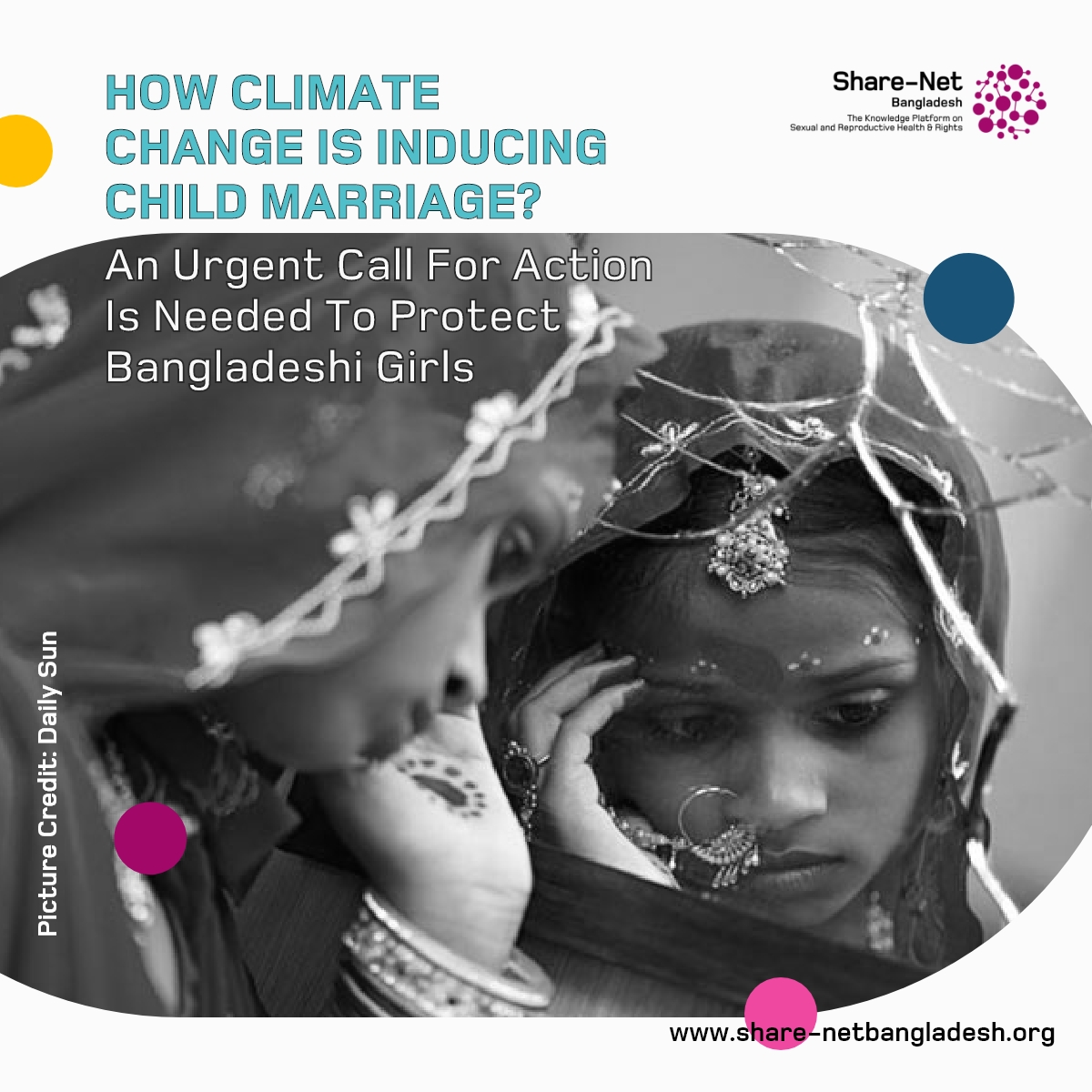How Climate Change Is Inducing Child Marriage? An Urgent Call for Action is Needed to Protect Bangladeshi Girls
“We raise awareness on the negative consequences of child marriage in the community and have stopped a few child marriage cases,” said a Class 8 student during a visit to a char in Kurigram. Her story reflects a growing crisis in Bangladesh: climate change is driving child marriage, particularly in vulnerable areas. This issue is not just about education and child rights but intersects significantly with Sexual and Reproductive Health and Rights (SRHR).
Secondary school enrollment for girls in Bangladesh has increased over the last decade. However, dropout rates remain high, especially in rural areas. According to the Bangladesh Bureau of Educational Information and Statistics (BANBEIS), the dropout rate for female students at the secondary level was 40.78 percent in 2022. This is exacerbated by natural disasters, such as river erosion, which displace families and disrupt girls’ education. When families move, girls often do not re-enroll, facing a higher risk of early marriage.
Child marriage, a severe violation of children’s rights and a form of sexual violence, is a primary reason for girls dropping out of school. In Bangladesh, about 51 percent of women aged 20-24 were married as children. Girls forced into early marriage face increased health risks and domestic violence. Despite the goal to eliminate child marriage by 2030 under Sustainable Development Goal (SDG) target 5.3, the issue persists, with a rise since the COVID-19 pandemic.
Climate change is compounding these challenges. Bangladesh is highly vulnerable to climate shocks like floods, cyclones, and droughts, which disproportionately impact girls’ ability to attend school. Disasters increase uncertainties for parents, making girls more vulnerable to early marriage as families use it as an economic coping strategy. According to the Global Girlhood Report 2023 by Save the Children, Bangladesh is among the top 10 hotspots for this issue.
The education sector must adapt to these realities. Climate change adaptation programs should promote greater access to quality education for adolescent girls, including flexible, accessible, inclusive, and gender-responsive distance learning programs. Improving educational facilities to be more resilient to disasters is crucial, as is enforcing laws against child marriage and strengthening child protection systems.
Targeted initiatives are needed to support the incomes of families with girl children, such as social protection interventions like cash transfers. Ensuring girls’ safety in communities, increasing parental awareness of girls’ rights, and launching campaigns to make child marriage socially unacceptable are vital steps.
Incorporating girls’ views in climate change adaptation and risk reduction activities is essential. Their priorities must be considered in all decisions affecting their well-being. By proactively addressing these issues, Bangladesh can ensure that girls can continue their education, dream freely, and realise their full potential despite the challenges posed by climate change.
The government, civil society, media, parents, and community members must work together to protect girls from the compounded risks of climate change and child marriage, ensuring they have the opportunity to contribute to the economy and society.
Source: The Daily Star


